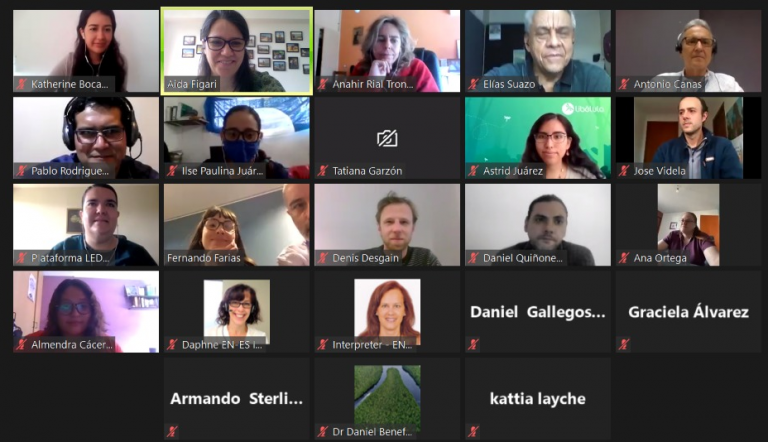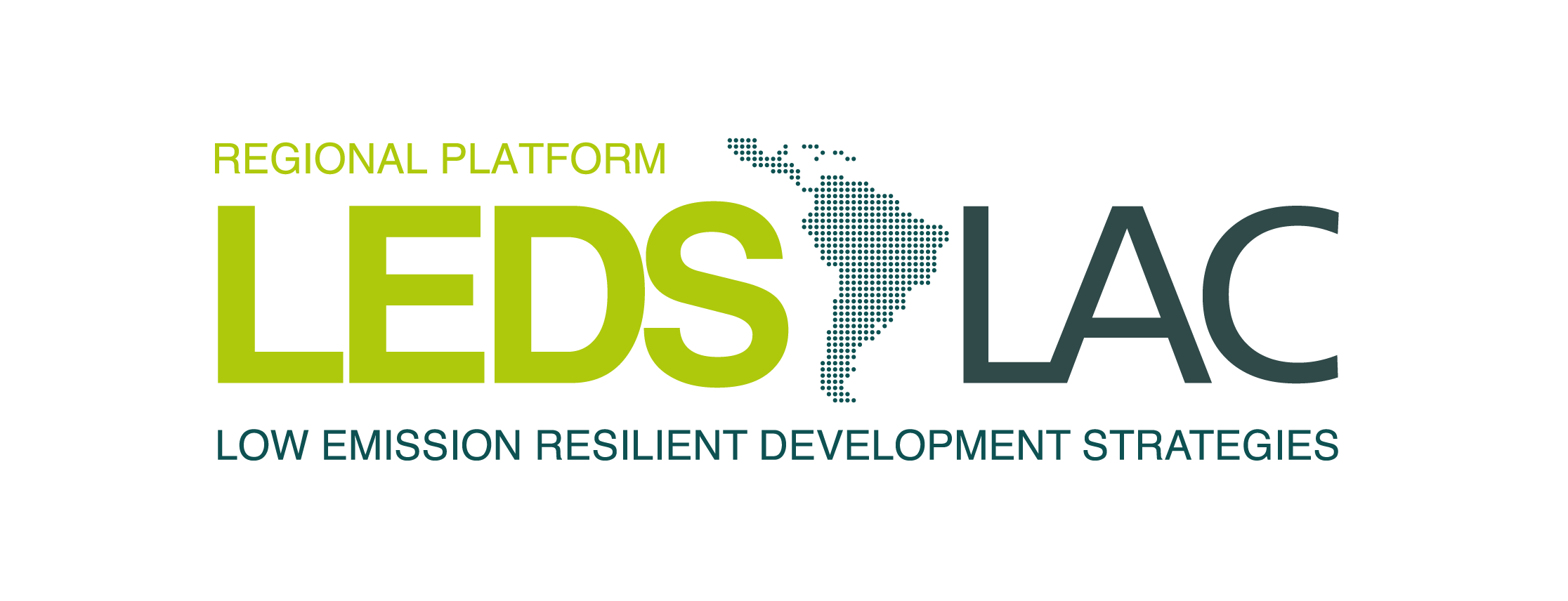
- April 21, 2021

Within the framework of the dissemination in Latin America and the Caribbean of the results of the Initiative for Transparency in Climate Action (ICAT), a peer learning session was held on the tool for establishing mitigation scenarios GACMO (Greenhouse gas Abatement Cost Model), organized by the LEDS LAC platform together with the UNEP DTU Partnership (UDP). This session represents the continuation of the webinar on the same subject held on Friday, October 09, 2020 in the framework of the Joint Regional Event.
During the session, the technical use of the tool and its practical utility were discussed in depth. Dr. Denis Desgain, Head of the Mitigation and Data Management Section of the UDP provided basic information on the tool and its structure, use and strengths. In this regard, it was shown that GACMO is an Excel-based tool that allows using the results of a greenhouse gas (GHG) emissions inventory and associated drivers to estimate a "Business As Usual" emissions scenario, estimate the reduction associated with various mitigation actions and the associated costs of implementing such actions. In this way, mitigation scenarios can be created for 2025, 2030 and 2050 based on the chosen actions. Dr. Desgain highlighted that the information provided by GACMO is useful for the design, implementation and monitoring of mitigation actions in the context of the NDCs. It is worth mentioning that GACMO has evolved over time and although it was initially a model created for the energy sector, it now considers other emitting source sectors included in the IPCC GHG emissions estimation methodologies.
A great strength of GACMO is that it is a simple tool in requiring data to build a baseline and a mitigation scenario, compared to other tools. In addition, GACMO is completely open and transparent so it is possible to visualize all the data entered and adapt the tool to a specific context.
Dr. Daniel Benefoh, Deputy Director of the Climate Change Unit of the Ghana Environmental Protection Agency, presented Ghana's experience using GACMO as the central analysis tool for the elaboration of its Nationally Determined Contribution (NDC), as well as for climate reporting at the country level, and as an NDC tracking tool. Dr. Benefoh highlighted that in his country, GACMO was chosen in 2015 over other tools because it is free, easy to use, transparent and open source. Because of the latter, it is possible to verify the entry of all data as well as to change default values of the tool for local country data (e.g., technology costs), which gave greater confidence to decision makers. Since the tool needs information from different sectors, a team of 20 decentralized champions was formed in nine ministries in the country who incorporated templates into their annual data collection systems. These efforts resulted in a baseline and emissions balance for each sector in the country. The tool made it possible to explore the costs of actions and to track whether the objectives for which they were created are being achieved. In the future, Ghana would like to have more training and work on the data collection template and improve the communication and visualization of the results.
Finally, it is worth mentioning that the tool has been used in the study Zero carbon Latin America: A path to net decarbonization of the regional economy by mid-century. The study is based on assumptions about energy demand, sectoral consumption, progressive penetration of renewable electricity generation technologies, and progressive disabling of fossil fuel plants in operation in the region. The application of GACMO helped to demonstrate that it is possible to reach carbon neutrality by 2050 in Latin America, with significant savings.
The GACMO tool can be downloaded free of charge at the UNEP DTU website. The recording and materials of the webinar on the tool that took place in October last year are available at the following link link.
About LEDS LAC
LEDS LAC is a platform for collaboration and action, driven by Latin American and Caribbean countries, to support the implementation of LEDS and NDCs, increase the ambition of emission reduction and adaptation targets, and define medium and long-term strategies, with a vision of a resilient and low-emission region.
LEDS LAC is the regional platform for Latin America and the Caribbean of the Low Emissions and Climate Resilient Development Strategies Global Partnership (LEDS GP). Launched in 2012, LEDS LAC operates under the general principles of LEDS GP, has an independent Steering Committee formed by representatives of international organizations, governmental institutions and NGOs from the region, and a Secretariat operated by Libélula - Climate Change Management and Communication, from Peru.
About ICAT and UDP
There is a growing demand for climate transparency information in Latin America and the Caribbean (LAC). With the approval of the Katowice rules at COP24, several countries in the region have sought to strengthen their reporting systems with international support. The Climate Action Transparency Initiative (ICAT) has been one of the most active initiatives in this area. ICAT's mission is to help countries better assess the impacts of their climate policies and actions, and to help them achieve their climate commitments. In this way it aims to contribute to greater transparency, effectiveness, ambition and confidence in global climate action. To date, ICAT has developed a varied toolbox of methodologies and tools for this purpose; and in LAC, ICAT projects have been implemented in Argentina, Chile, Colombia, Costa Rica, Cuba, Dominican Republic, Ecuador, Mexico and Peru. For its part, the UNEP DTU Partnership (UDP) has been involved since the beginning of the initiative as a leader in the execution of ICAT projects in the countries, assuming coordination roles, providing technical assistance and coordinating activities to improve technical exchanges between countries.
